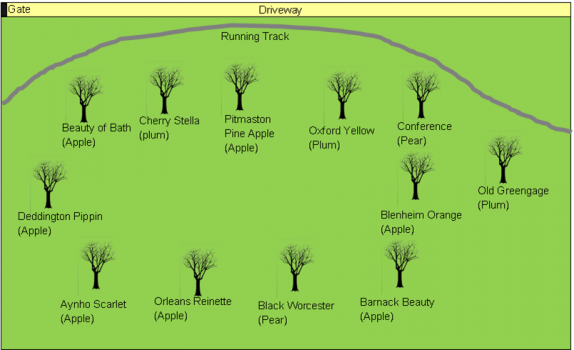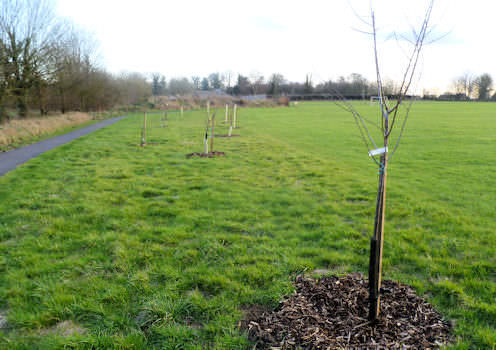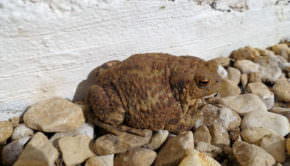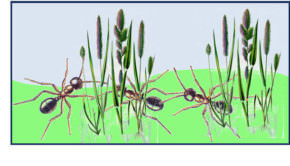Biodiversity Group: Community Orchard
The Community Orchard on the Playing Field
In recent years environmentalists have stated that small traditional orchards could vanish from the British landscape by the end of the century. Natural England and the National Trust suggest 60% of England’s orchards have disappeared since the 1950s. This has impacted on local biodiversity, as the traditional orchard is a crucial habitat for flora and fauna, including mammals such as long-eared bats, birds, moths, lichens and fungi.
In Aynho, we have had the opportunity to plant a traditional orchard, the definition of which is: “having at least five trees widely spaced and allowed to grow gnarled, hollowed and eventually fall where they stand. They are not intensively managed and are treated with few or no chemicals.” We have planted a wide variety of local fruit trees, including eating apples, plums, greengage and pear. We will monitor the biodiversity of the orchard in the coming months and years and, of course, enjoy the fruit with the rest of the village. Below is information on some of the varieties. More information on others such as the Aynho Scarlet will follow next month.
Deddington Pippin apple: Discovered’, named and propagated by Andy Howard (The Heritage Fruit Tree Company based in Adderbury) in 2007. Excellent cookers and dual purpose apples that can be eaten or cooked.
Pitmaston Pine Apple apple: Raised by Mr White, steward to Lord Foley of Stoke Edith, Herefordshire in 1785 and introduced by Mr Williams of Pitmaston near Worcester. A late dessert russet apple tasting of pineapple and honey.
Beauty of Bath apple: Propagated by George Cooling of Bath in 1864 and awarded an RHS First class certificate in 1887. It usually crops in August but is sometimes ready as early as July. Soft juicy flesh with a fairly sharp flavour.
Conference pear: Cultivated by Thomas Rivers of Sawbridgeworth, Hertfordshire in about 1884. It was first exhibited at the British National Pear Conference in 1895 hence its name. Sweet and juicy.
Black Worcester pear: Probably the oldest English pear still in use and can be traced back to the early 16th century. A cooking rather than an eating pear.
Barnack Beauty: Raised at Barnack (near Stamford, Lincolnshire) in 1840. Very sweet, juicy, yellow fleshed apple.
Orleans Reinette: First recorded in the 18th century. Late- season apple very different from modern apples being firm and crisp to the bite.
Aynho Scarlet: The Aynho Scarlet grew just on the edge of Aynho on the B4100 for quite a few years. Unfortunately one year the Highways Agency took out the whole tree. Luckily Andy Howard from the Heritage Fruit Tree Co in Adderbury had taken graft wood by then and propagated it naming it the Aynho Scarlet. A dark red/scarlet, crisp and crunchy apple reminiscent of a spartan/braeburn.
Blenheim Orange: Discovered around 1740 in Woodstock, by the local cobbler (some say tailor), George Kempster, growing against a boundary wall at Blenheim Park. He moved it to his garden, where it became famous locally. It was originally named Kempster’s Pippin. The Duke of Marlborough at Blenheim Palace approved of the apple and it was renamed Blenheim Orange in 1804. A late culinary dessert apple with a sweet, nutty flavour.
 |



